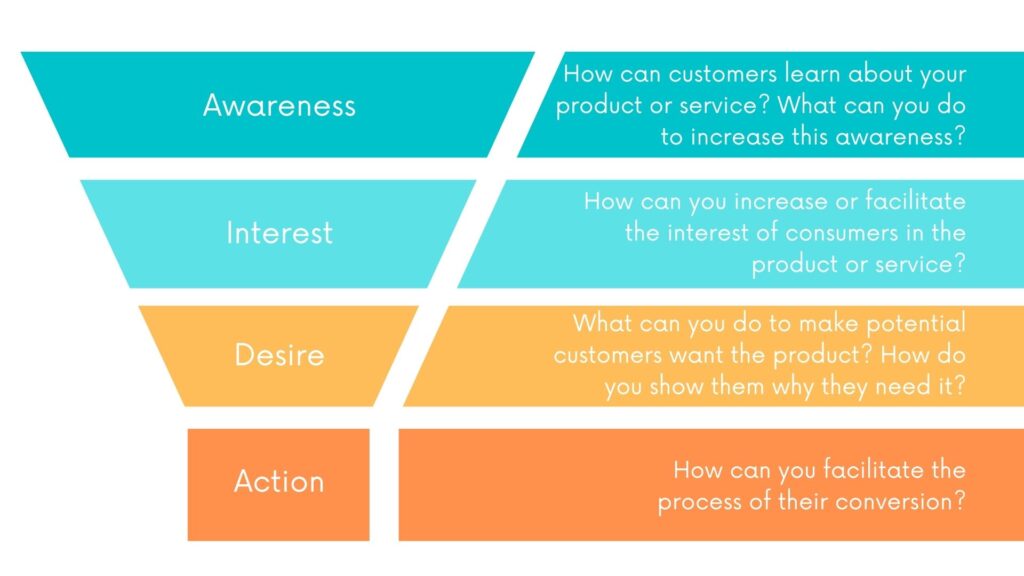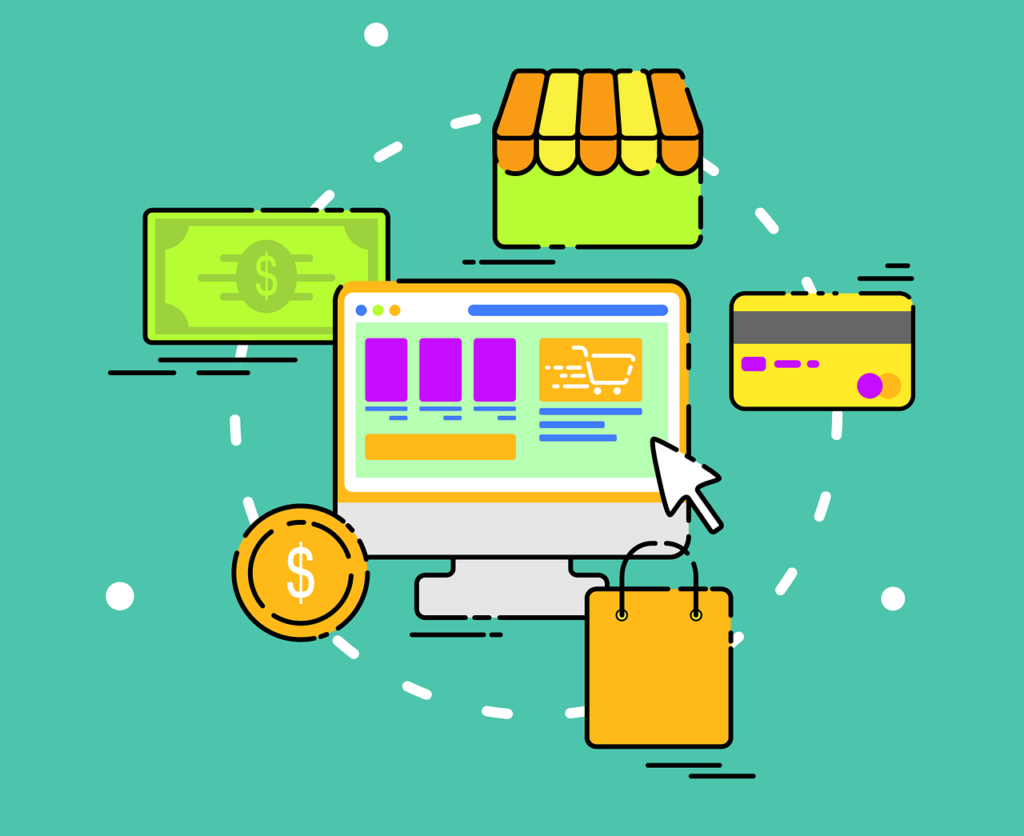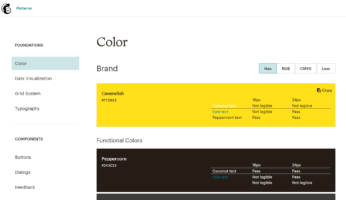
Top 3 UX Tips To Improve Your Website And Convert Customers
High Clickthroughs But Low Conversions? Here Are 3 Key Factors That Can Increase Your Sales Online
A suboptimal conversion rate might point to deficiencies in your website’s user experience.
Good user experience facilitates conversion. 73% of consumers surveyed by PricewaterhouseCoopers consider customer experience a key factor in their purchasing decision. When talking about user experience, we tend to focus on loading speed, readability, white spaces, and call-to-actions.
While these are undoubtedly important, there are lesser mentioned aspects of user experience that are no less essential. Understanding the conversion funnel will help you better appreciate the role of each aspect in converting more customers.
What Is The Conversion Funnel?
The conversion funnel is a process you create to attract potential buyers and guide them to take a desired action. There are 4 stages in the funnel – awareness, interest, desire, and action. The stages in the conversion funnel resembles a buyer’s presale experience and each stage poses questions that guide you to think about how you can enhance that journey.

Remember, the desired action differs depending on your business goals and the conversion process extends to return customers, not just first-time users. Are you looking for more site traffic or successful purchases? Is it click throughs that you are after or more trial users? Your business goals will guide your conversion funnel and it pays to be crystal clear.
With that in mind, here are 3 things you can do at each point of your conversion funnel to improve user experience and increase conversion rates.
#1 Refine Information Architecture

Information architecture is the process of creating a structure for a website, application, or project. Information is organised hierarchically to make website using more effective. It is, in essence, the project’s blueprint and you can think of it as organising content in an effective manner.
Information architecture addresses the awareness and interest portion of the conversion funnel. How can users learn more about your product if they cannot find what they are looking for? Given the premium placed on efficiency and convenience, it is unsurprising if consumers develop negative feelings towards your business after a bad experience.
Indeed, one bad experience is all it takes for 32% of customers to walk away from a brand they love. Information architecture can help by presenting information in a logical and intuitive manner, allowing products, services, and other relevant content to be found.
To start, you can do an audit of your content. List down existing content and where they are located on your website. Note down the content that gets the most traffic. The last thing you want is for good content to get lost in the expanse of your website.
Next, you will want to look at flattening your information hierarchy. Cut down on the link chains so that users can obtain whatever they need quickly. As a rule of thumb, ensure that consumers can access any content within 3 links. Dan Brown’s 8 principles of information architecture is also a good starting point for you to review your own structure.
#2 Enhance User Onboarding Process

User onboarding is more than just showing consumers how to use your product or service. Good user onboarding demonstrates value to new and return users alike by prompting them to take actions within the product or service.
The user onboarding process addresses the desire portion of the conversion funnel. It gently nudges users in specific directions to showcase the product’s value. Businesses often neglect repeat customers in the user onboarding process; however, this segment of consumers have the most to give. Keeping them in mind when designing the user onboarding process can help to keep them engaged, encourage upgrades, and boost customer retention.
When looking at user onboarding for first timers, you really want to consider streamlining and personalising the process. For instance, a host and a guest on Airbnb will interact with the website and application in different ways. Cater to both users by creating separate onboarding sequences for hosts and guests. For repeat customers, user onboarding can come in the form of tooltips or product tours. The point of onboarding is to help consumers find value. Well written tooltips can do that by showing users new ways to use familiar tools.
On the other hand, product tours are a good way to get existing customers excited about new products. Demonstrating how these integrate into their existing workflow and providing real life value with a trial or freemium product can go a long way in converting repeat customers.
#3 Fine-Tune Payment Flow

The payment process is ubiquitous. Every consumer will go through the payment experience, from adding items to cart to successfully checking out, and it is necessary to do it well. Users want easy payment, with 2 in 5 consumers willing to pay a premium for it.
While the action portion of the conversion funnel typically signify conversion (and completion), in reality, the battle has not yet been won. Nearly 70% of consumers abandon their online shopping cart and 1 in 5 customers cited the long or complicated checkout process as a reason. Smooth and secure payment plays a big part in improving user experience and decreasing abandoned cart rates.
There is a number of things businesses can do to persuade consumers to successfully checkout. If your only purchase option is ‘add to cart’, you are missing out. Including immediate purchase options allows you to tap on buying impulses and increase successful sales. Websites like Amazon and Taobao have long been using this tactic to convert more customers.
Of course, carting out is only possible if users can actually enter the payment process. More and more consumers are now browsing on their mobile phones. It is important to ensure that checkout processes are available and optimised across devices. This might mean breaking up the forms into smaller, more manageable sections and including progress bars to encourage users to finish them. Minimising the number of steps aside, it would be even better if businesses could make data input easy such as by using Google autofill or Google Pay.
A healthy portion of consumers who abandon their carts are comparing prices on other sites. Remembering the contents of their abandoned carts and automatically adding those items when they next enter your website allows them to pick up where they left off easily. Remember, efficiency and convenience are the most valued in user experience.
While there are many benefits to registering new customers, be careful in how you encourage sign ups. Recognising repeat customers by offering membership is a good way to increase conversion rates. However, it is also the second most cited reason for abandoning shopping carts. Offering it in a non-obtrusive way prevents businesses from scaring customers away, as can providing an option to sign up using a social network account.
Increase Your Topline Revenue By Improving Your UX
Conversion rates are crucial to businesses. Understanding your business goals and using the conversion funnel can help you think about how you can optimise user experience to convert more users. While we highlighted just 3 areas you can look at to increase conversion, our team at InterX can help you identify and improve in other lesser mentioned aspects of user experience. If you would like to know more about what we can do to help, drop us an email at sales@interx-labs.com.









